The day is here! Ready or not, my sister and I are about to begin our trek to the summit of Mt. Kilimanjaro. Some of us have trained for it (Bethany) and some of us have not (me), but either way we’ll give it everything we’ve got.
Zara Tours — one of the premiere trekking companies located in Moshi at the base of the mountain — will lead our trek. They’ve come highly recommended by friends back home and they have a stellar reputation.
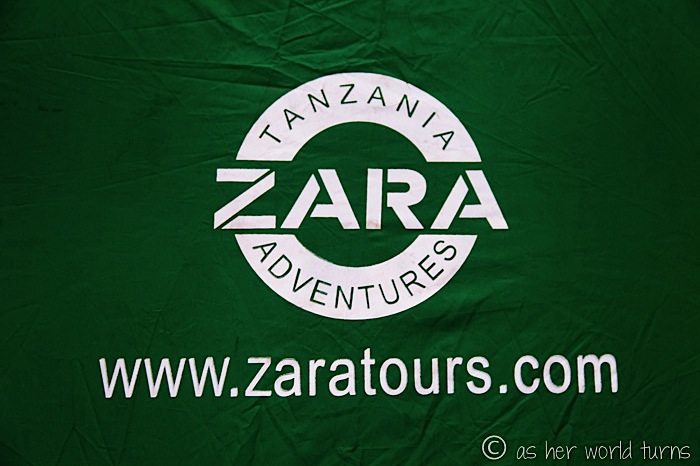
The afternoon prior to our departure, we met our tour guide Bruce and assistant guide Thomas. In total, it will take nine men to get Bethany and I to the summit of Kilimanjaro — a specific number of porters, cooks, assistant guides, etc. are required for each hiker by the Kilimanjaro National Parks Authority. When I climbed Everest Base Camp, it was permissible to go alone or to take a single guide/porter (I did the latter), but for Kilimanjaro you must trek with a whole team of trained people. These regulations protect the local employees so that they are not taken advantage of and it’s the main reason it costs more to hike Kili compared to Everest Base Camp.
Here’s our guide Bruce (on the right) and assistant guide Thomas (on the left) — Bruce successfully guided our friends to the summit a few years ago and we’re thrilled to be paired up with him. Thomas is outstanding too.

We depart the Springlands Hotel at the leisurely hour of 9am. After a quick stop at a grocery store for last-minute supplies, we head to the Machame Gate.
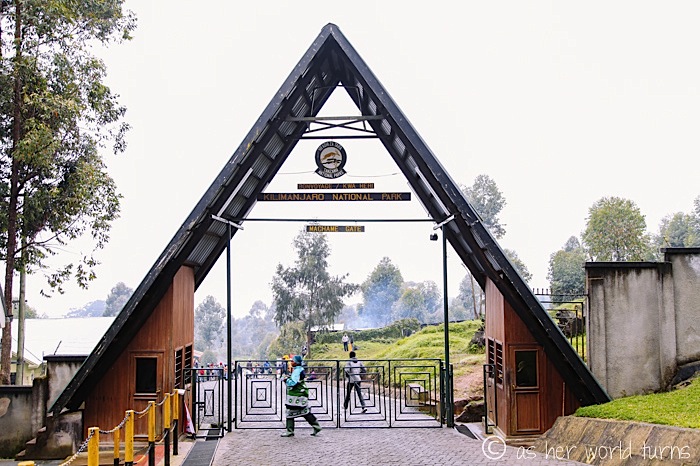
There are many routes used to climb Mt. Kilimanjaro. Unlike Everest Base Camp where there’s only one main way to get to the top on the Nepal side (Lukla to Gorep Shep), there are around seven paths to the top of Kili — all of which begin in different spots around the base of the mountain before merging near the summit. Each one is unique and climbers pick their route carefully based on the experience they’re looking for.
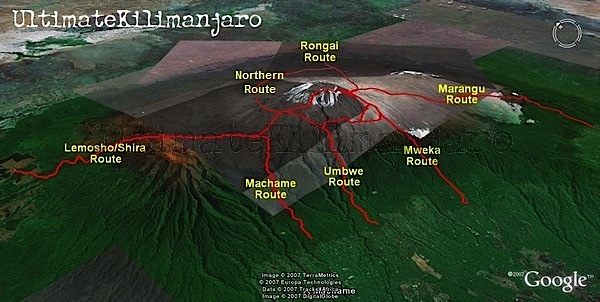
[image via]
Here are the most popular treks:
- Marangu Route (aka the Coca Cola Route) takes a minimum of 5 days and hikers sleep in huts along the way. It’s considered less scenic because trekkers ascend and descend on the same path. It’s the shortest and therefore cheapest route, but less time to acclimatize equates to a lower success rate for reaching the summit. You can add an extra day but it’s still a steep trek. Popular route so the trail is busy.
- Machame Route (aka the Whiskey Route) takes a minimum of 6 days and hikers sleep in tents. Known for great scenery, as it passes through five climate zones. Easy option to add an extra day which increases odds of reaching the summit. Very popular route so the trail is busy.
- Lemosho Route takes from 7-9 days and hikers sleep in tents. It’s got the best success rate due to its slow and steady acclimatization. It meets up with the Machame Route in the finals days. Less populated trail.
- Rongai Route takes 5-7 days and eventually meets up with the Marangu Route. It starts out in a true wilderness area for the first few days and rangers with rifles often accompany trekking groups just to be safe. Less populated trail.
My sister and I have picked the Machame Route because it has a good acclimatization profile and it fits our budget — plus I’m excited about its reputation as a particularly scenic route. It will be a challenge for sure; I have no idea if I will reach the summit, but I’m pretty determined.
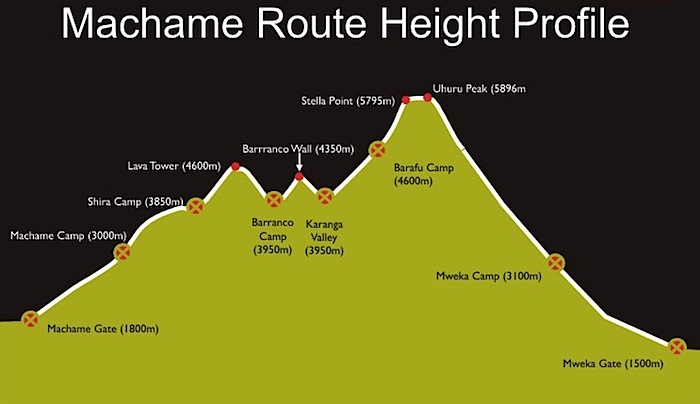 [image via]
[image via]
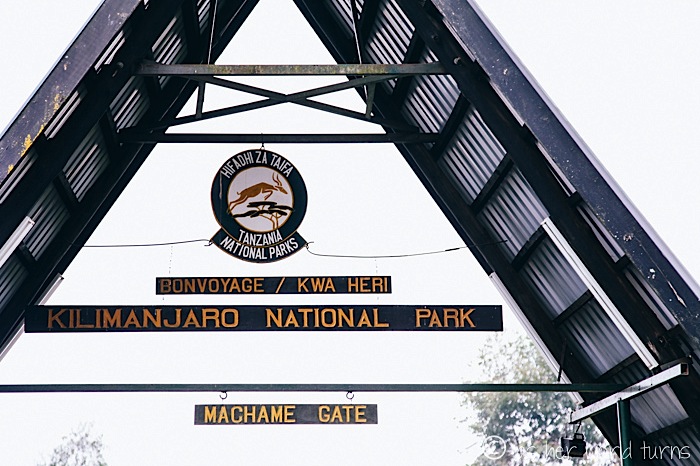

This sign breaks down each part of the trek that awaits us, as well as estimated hiking times. Tonight we’ll camp near the Machame Hut and it should take under five hours to get there. We’ll see how that goes.
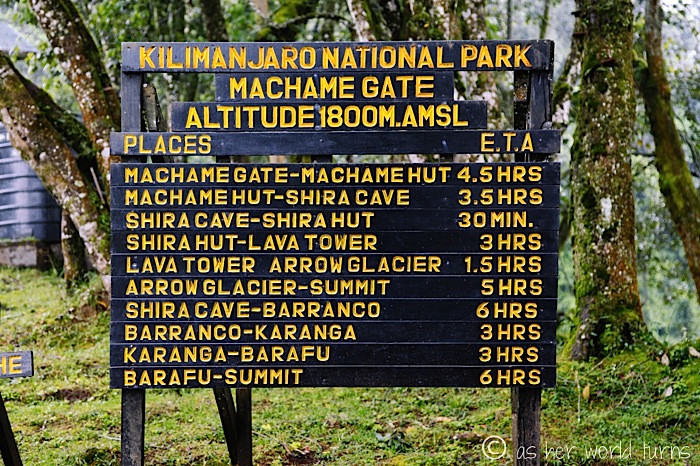

It’s difficult to read the signage below so I darkened this photo quite a bit — it’s guidelines for avoiding altitude sickness:

Bethany and I sign into the log book at the Machame entrance gate.

And then… we wait. It takes two hours before our team of porters is ready to go (all of their packs must be weighed since limits are strictly enforced by the parks service). Quick game of checkers, anyone? I love the improvised pieces.
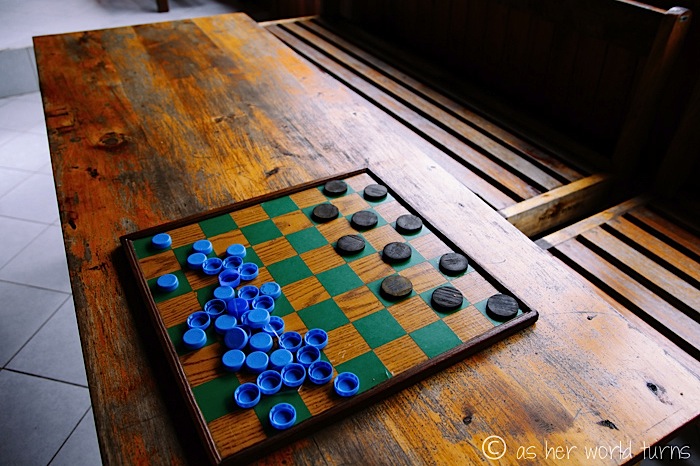
Our guide Bruce comes over while we’re waiting because he suspects that I will have to hide my water bottles when I pass through the main gate and any checkpoints later today. It turns out a new rule recently went into effect: no plastic water bottles may be carried on the trail. This is frustrating because I have two 1.5 liter water bottles that I’m planning to use and refill throughout the entire seven day trek… and now ironically I have to conceal them in plastic bags. I had purchased an actual water bottle yesterday in Moshi but I discovered it had a leak while packing last night, hence my decision to simply use the plastic bottles I’d purchased the water in. I understand that this new rule will help deter litter on the trail, but I never would’ve discarded my bottles on the mountain anyway. Oh well. I want to be sure to mention this new rule here since I didn’t see it on any of the blogs I researched prior to our trip.

Above, the porters divide up the gear, food, etc. that must be carried up the mountain. Each porter may only carry 20kg of weight plus a few extra kilos for their own personal stuff. Guides and cooks do not carry any extra weight aside from their own gear.
This is the checkpoint porters pass through to have their packs weighed by officials:
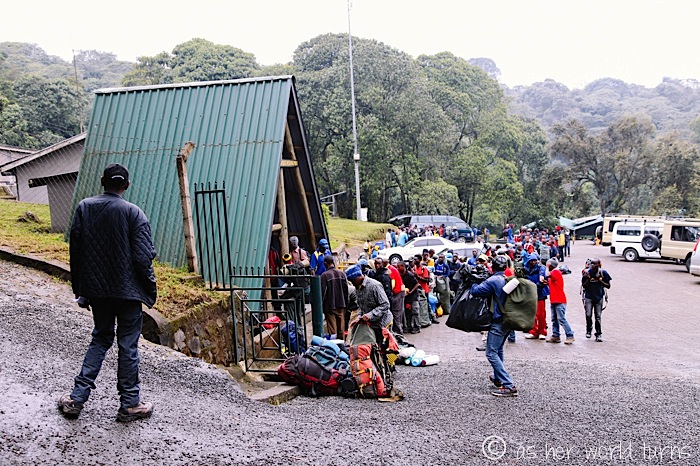
And then we’re good to go! It’s nearly noon when we pass through this gate and officially begin trekking.
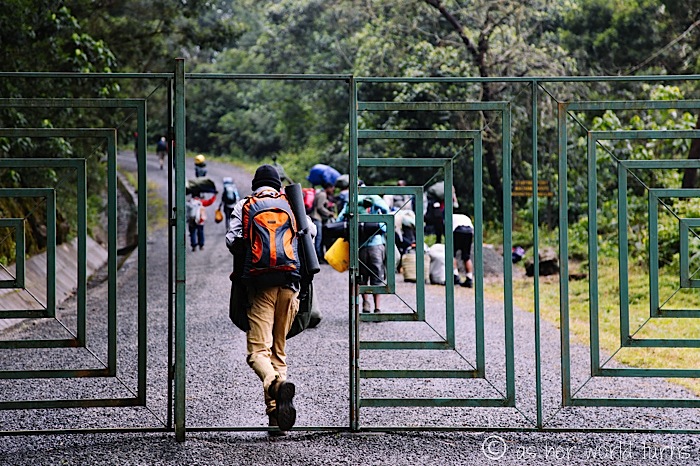
Today’s climb will take us through lush, woodsy, jungle-esque terrain. Lots of pretty greenery and no mountain views.
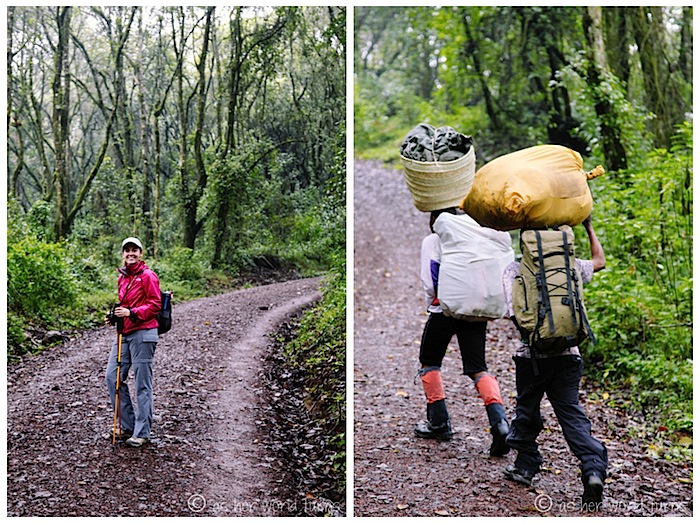
Despite the heavy loads on their backs, porters pass us with ease. Check out the loaves of bread strapped down on their packs:
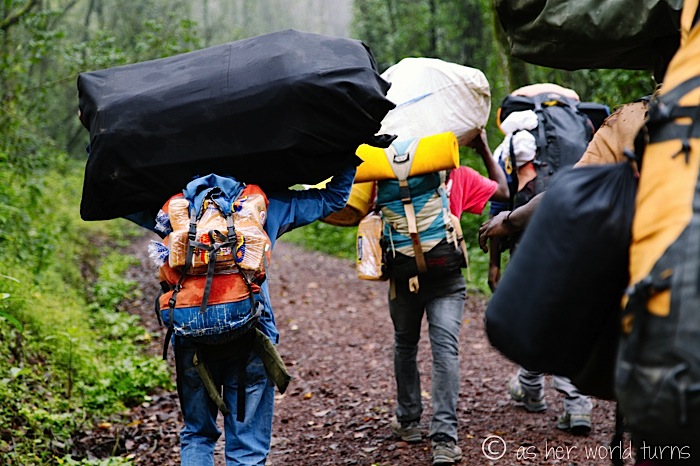
We’re encouraged to climb pole pole, which means “slow” in Swahili (not to be confused with a single pole which translates to “very sorry”). We hear this two-word chant all day long on the trail, exchanged by porters and hikers alike as a greeting of sorts. I love that it gives me permission to ease off the gas pedal and catch my breath for a minute.
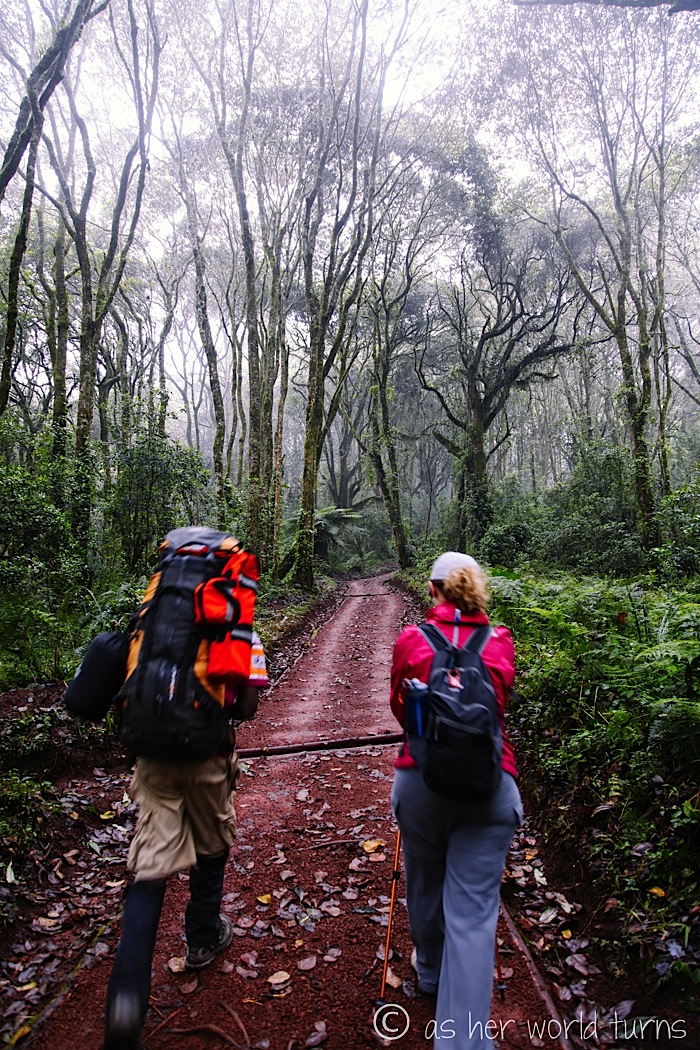

For the most part trekkers us a bush toilet (i.e. squat behind a shrub) but once or twice we come across a toilet hut, which is essentially a hole in the ground with a roof overhead.
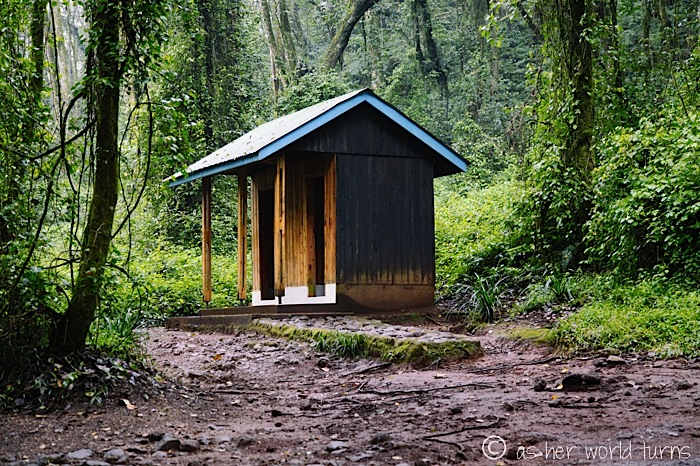
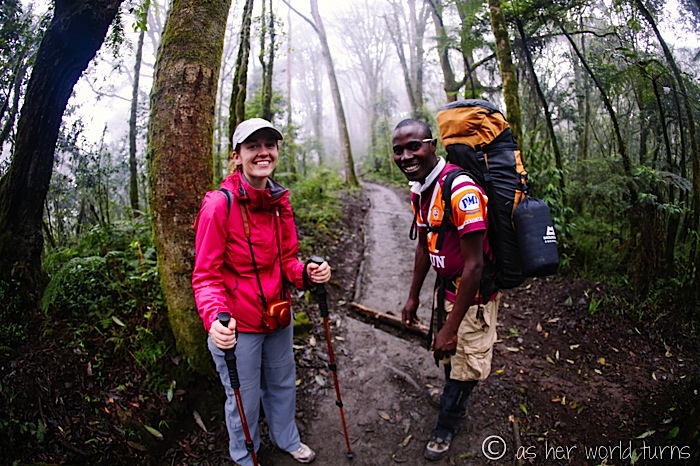
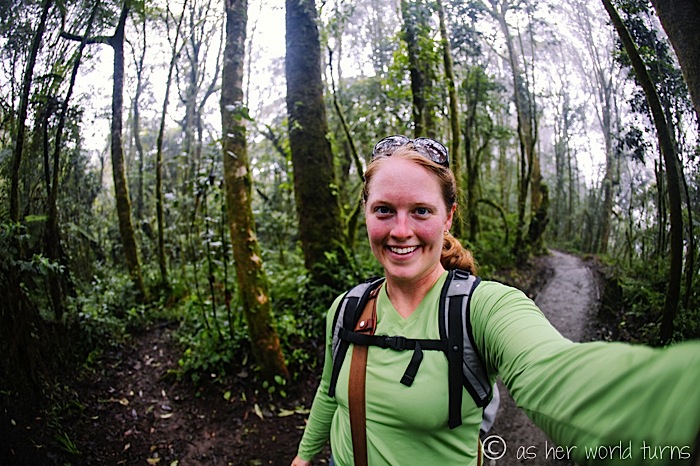

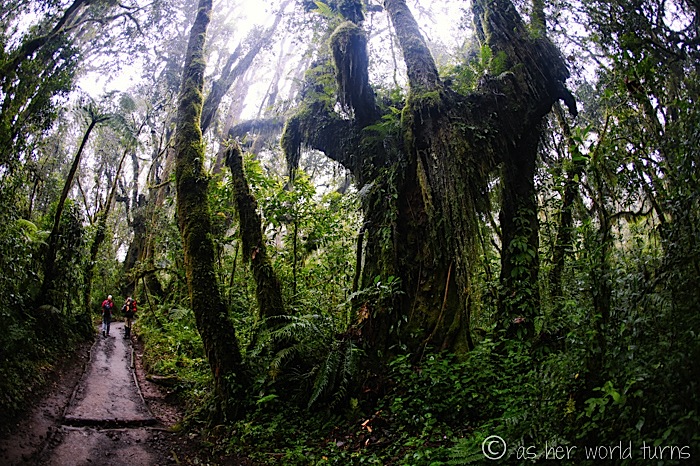
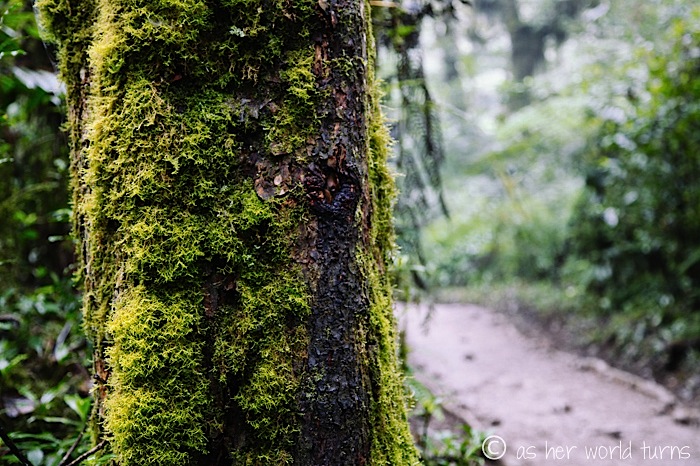
We spot some unusual and vivid flowers along the trail, many of which I’ve never seen before:



It rains a lot on this part of the trail so paths can get quite muddy:


Hey look, that’s my name!





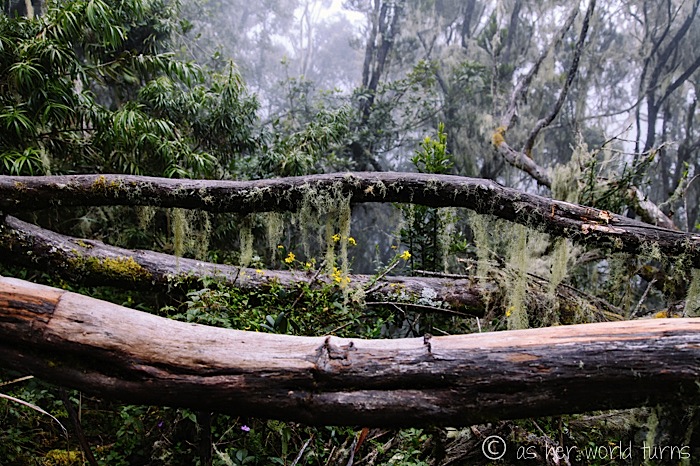
This moss is pretty epic; we encounter it many more times en route to the summit. It looks like a gnome’s beard.

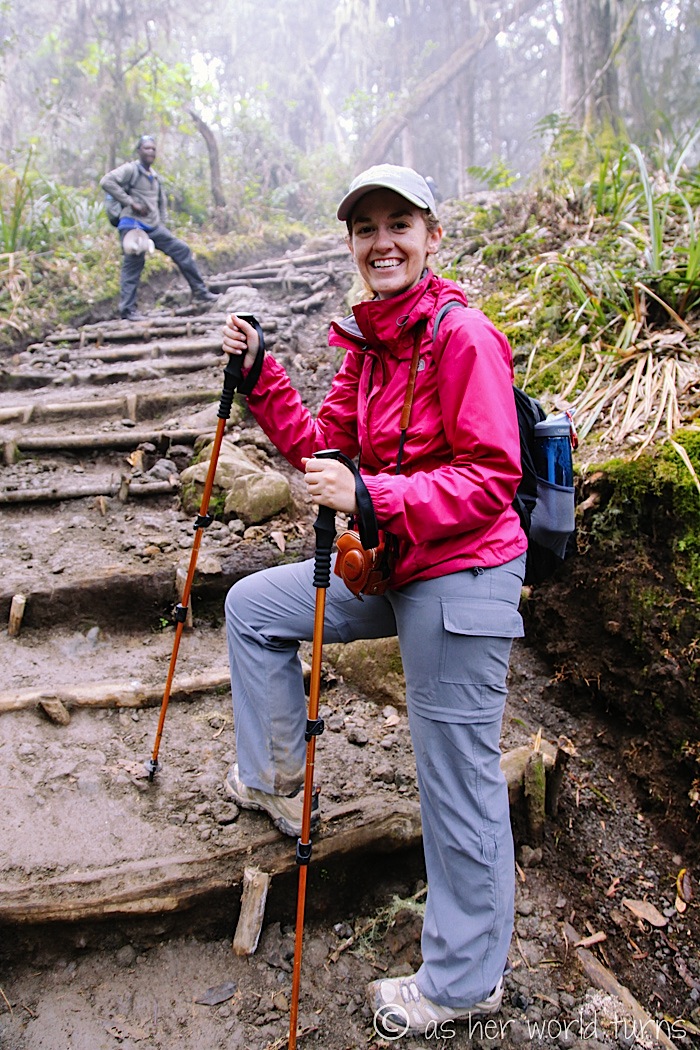
Wahoo, we make it to the Machame hut at 10,000 feet elevation about an hour before sunset. So how’d we do on time? We took the pole pole advice to heart and it takes us nearly six hours to reach this spot instead of the estimated five. Special shout-out to Bruce for carrying my backpack the last two hours. This evening I’ll re-evaluate all the stuff I’m carrying so it’s not as heavy the following day.
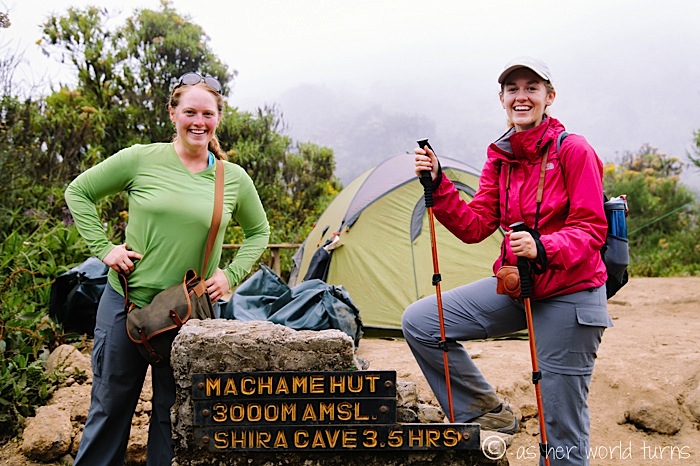
We sign in at the main hut. I have to hide my water bottles again so as not to get in trouble with the rangers.
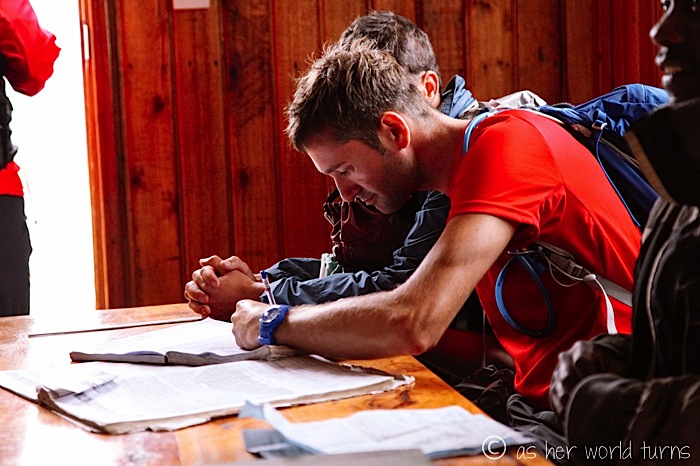
And since the porters sprinted past us hours ago, they’ve had time to set up all the tents. It’s glorious (if a bit lazy on our part) to walk into camp with everything set up already.
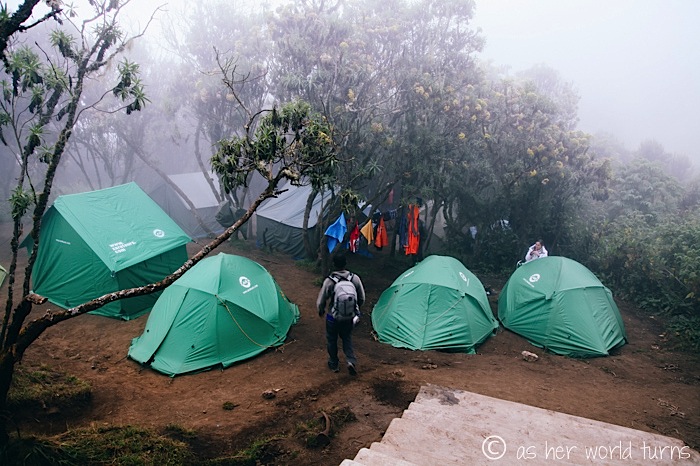
Beth shows off our tent for the night:
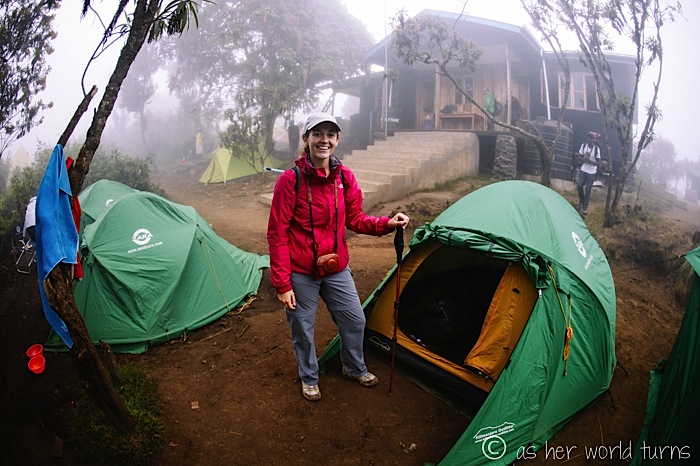
Next door they’ve set up a dining tent, just for the two of us. Popcorn and cookies await! Plus we have our own toilet… more on that in a later post.
This is way more like glamping than I ever expected.
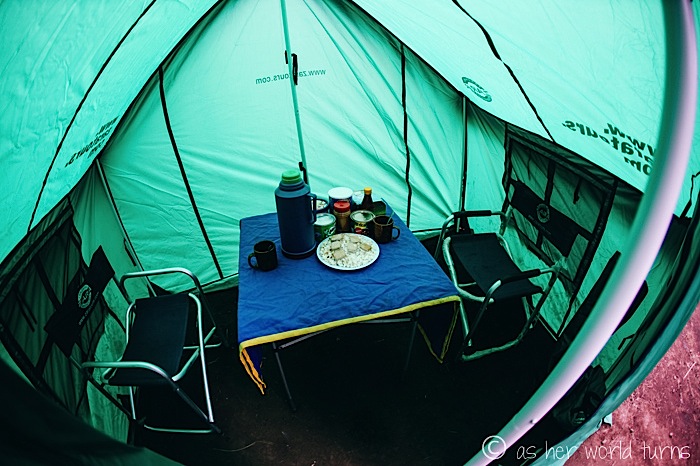
Later that night our chef serves a hearty meal that includes fried fish. FISH! Partway up Kilimanjaro!
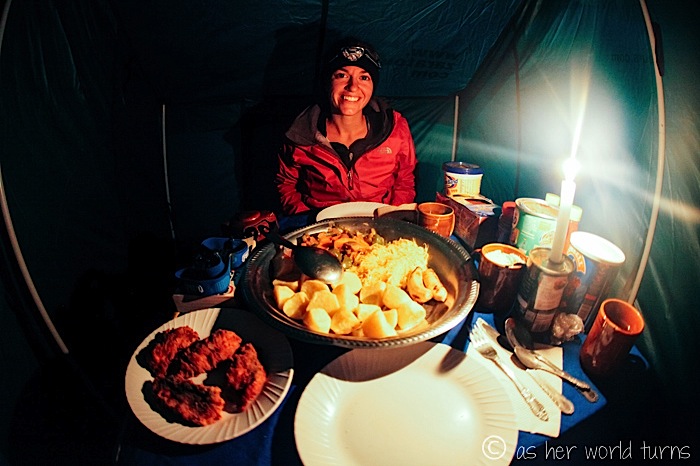
After dinner, we break out a deck of cards for a few rounds of dealer’s choice by candlelight.

All in all, I’m so pleased with Day 1 of our trek. I pop some Ibprofin PM to ensure a good night’s sleep while simultaneously relaxing my overworked calf muscles and curl up in my sleeping bag.
Many thanks to Zara Tours for discounting my Kilimanjaro trek in exchange for photography and blogging. Opinions are my own.

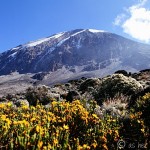
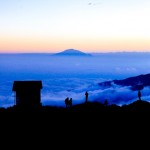
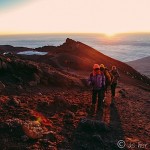

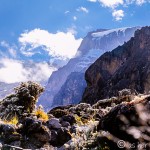
Great post. Can’t wait to see your future posts and your photos of the trail up to the summit. This brings back fond memories. I climbed Kili two months ago with Zara Tours on the Lemosho Route, which merges with the Machame Route about halfway up. I can’t wait to go back!
Bryan, I’m so glad your Kili trek was successful! The Lemosho route looks beautiful; I wish we’d had the time/budget to do a longer trek. Did you encounter lots of wildlife in those first few days? Lots more Kili posts coming this week and next!
A few colobus monkeys in the rainforest zone was all I saw. Until I got up higher and saw all the white-necked ravens hanging out.